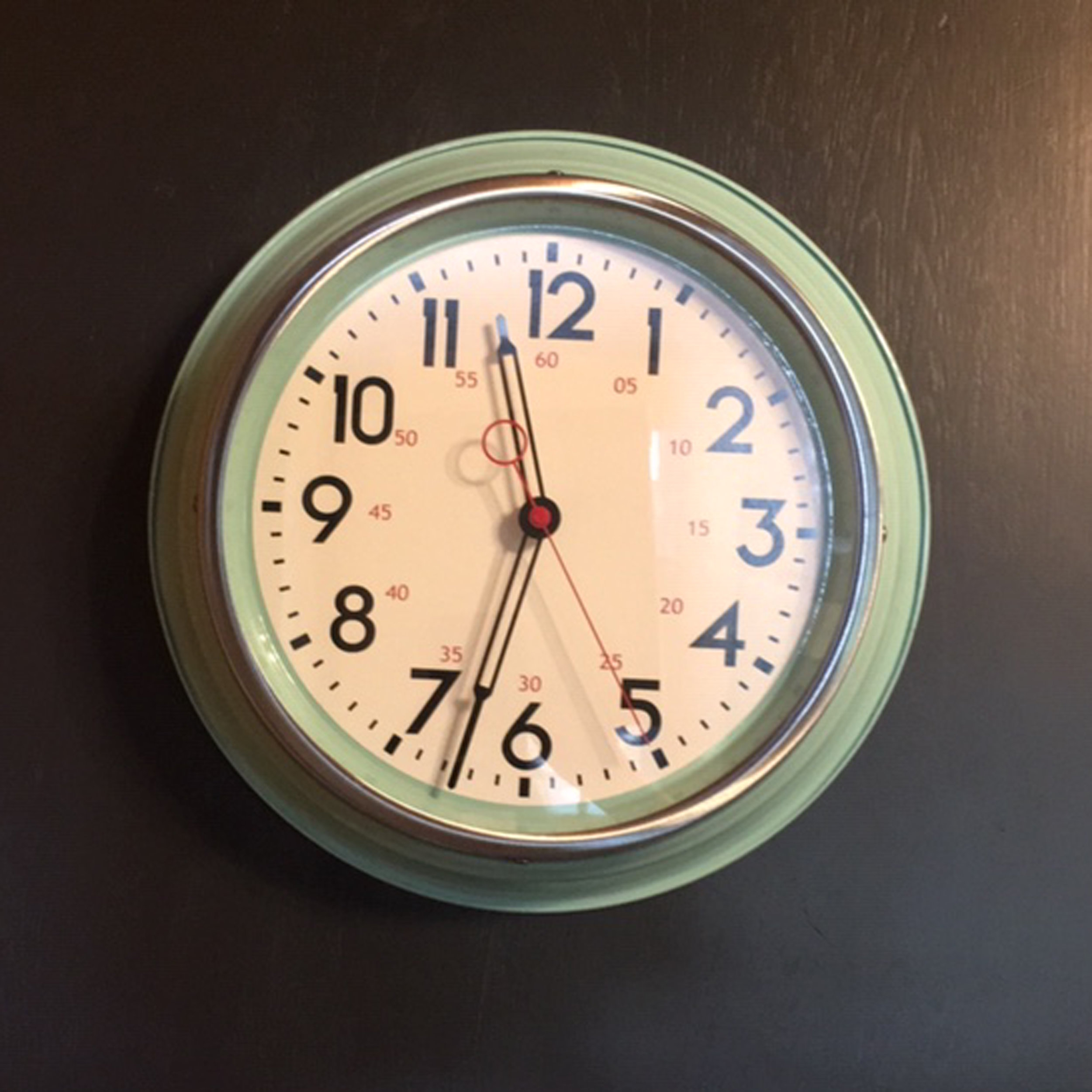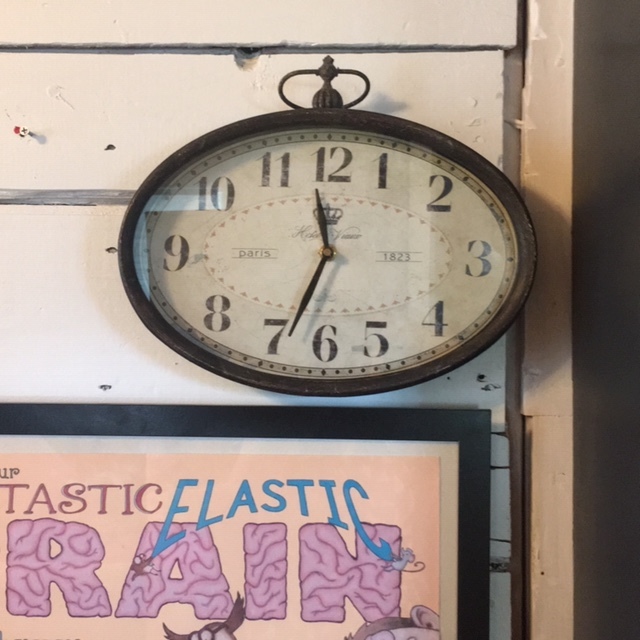As I was setting up my new office, I laughed at how many clocks I have in 340 square feet of space. Each clock is incredibly necessary to both myself and my clients. My clients are aware of those clocks that face them… but they are also aware of the clocks that face me. They notice when my eyes look to see how we are doing on time. I notice when their eyes look to see how much time has passed. Time is an important concept in therapy. When I am at my best, I am very aware of the dynamics of therapy and how it works within the concept of time. How we begin with pleasantries and updates - how I hope that we have moved into deeper content by the half way point - and how I try to find ways to contain emotion and experience within the last ten minutes. Most of the time it works well… and sometimes it doesn’t.
Clock One: The waiting room
In my waiting room we have this nice big timepiece in my favorite color of light greenish turquoise… which incidentally is many of my client’s favorite color too since I am replacing that color constantly in my paint bin. Here is a picture of me on the waiting room couch.
Waiting room clocks help me to stay accountable. I know you are waiting - and I need to respect your time. Waiting room clocks also let you know if you are on time or not. (That may have to be another blog post). Waiting room clocks are helpful for parents who are waiting for their children or teens on the other side of the door. Waiting room clocks tell you how long you have been waiting and how much longer you need to wait.
Clock Two: Talk therapy client clock
When you are sitting on the couch, as shown, this is your clock. It is to the right of where my head would be. Some clients are hyper aware of the time. They have much to talk about and need to be sure to fit it all in… whereas others might save some of the most important discussion topics for that last fifteen minutes in the session. We call those “Door knob disclosures”… Just as you reach for the door knob and we are closing up the session, you disclose something like , “I decided to divorce my husband. Remind me to tell you about it next week.”
Those last minute disclosures are super important, and I for one appreciate them. They are telling me that you really do want to talk about this thing, but you might not want to talk about it at the moment. You are leaving it to me to assist you in broaching the subject at our next meeting. So, I might try to agree that it is a big topic - make sure you are taking good care of yourself - and promise that we will start there next week. Our hour is the container.
Clock 3: Talk therapy therapist clock
This clock helps me to stay on task and create the container. I must be careful to give enough time to process thoughts fully and allow for questions and insights. Every therapist has an experience of making a comment not realizing that it would trigger emotions and experiences that can not be processed in the time allotted. It is a terrible feeling. This is why being mindful of the questions and comments I make within the framework of time is crucial. Your therapist isn’t looking at the clock because they are bored. They are looking because the clock gives us information as to how we should proceed.
Clock 4: Art Therapy client clock
When you are sitting at the art table (as shown), this is your clock. Do you have enough time to add another color of paint to your art piece? Are you going to be able to finish before the end of the session? Should you thread that needle and add some more stitches to your hoop? This clock allows you to manage your time…. and of course, also manage your disclosures… just like your other clock.
Clock 5: Art Therapy therapist clock
I tried to do without this clock at first. I thought I could still kind of see Clock #2 from this vantage point… but my looking all the way to the other side of the room was too distracting. (I am looking at the other clock in this picture, just to give you an idea)… So, I had to buy clock #5.
I also help my clients manage their time with this clock. “Just wanted to let you know we have about ten minutes left, so you might want to find a good stopping place for now.” I don’t want anyone to feel rushed making art. Many of my clients know that some projects we finish in one session - and some projects we work on for months. It all depends upon the project. And of course, I am also watching this clock to help maintain the container of therapy.
5 clocks in 340 square feet of space. What is amazing is that with five clocks in 340 square feet of space… I don’t really hear any of them. I wonder if my clients do?









